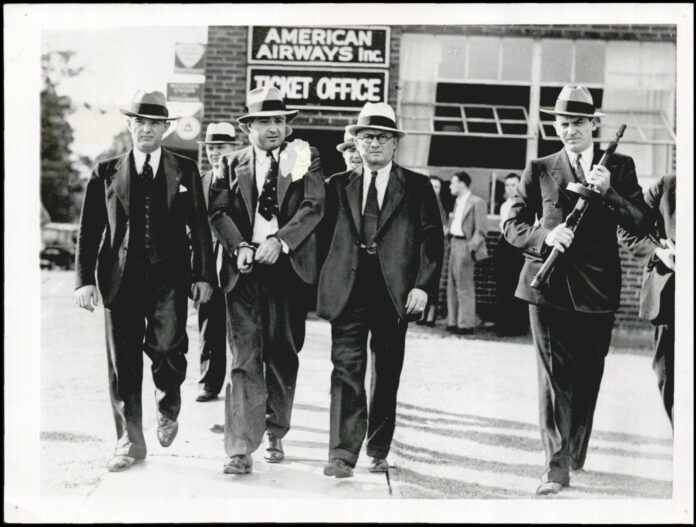
If you were looking for a place to go on a crime spree during the end of the 1800’s all the way through the Great Depression, Oklahoma was the place to be. After all, you certainly wouldn’t have been alone.
Oklahoma – and before statehood, Indian and Oklahoma Territories – held onto its wild and remote reputation for longer than many places in the nation. This created an opportunity for crime, conjuring some of history’s most notorious outlaws. We explore a few who either hailed from Oklahoma or committed some of their heinous deeds within our borders.
Dalton Gang
The Dalton boys started out as lawmen – U.S. marshals in Arkansas and Kansas. But brothers Emmett, Grat, Bob and Bill quickly turned to lives of crime. After cutting their teeth with train robberies in California, they moved to Oklahoma, near their birthplace of southern Kansas, to continue the trend. Their careers moved on to robbing banks until Bob and Grat were killed during an attempted bank heist in Coffeyville, Kan. Bill joined the Doolin gang and was later killed in a shootout. Emmett spent time in prison for his involvement in the Coffeyville bank robbery, then turned his life around to become an author, movie maker and businessman in California.
Marlow Brothers
Like many stories from the time, the Marlow brothers’ is a mixture of outlaw and hero. Brothers George, Lewellyn, Charlie and Alfred had been accused of stealing horses and were being transported for trial in 1889. A mob attacked them on the way. Alfred and Lewellyn were killed in the fight, but George and Charlie have gone down in history for fighting off the mob … despite being chained to their dead brothers. The two surviving brothers moved their families to Colorado where they both, ironically enough, became police officers. The town of Marlow in southwestern Oklahoma is named for this famous family.
Machine Gun Kelly
The kidnapping of Oklahoma City oilman Charles F. Urschel in 1933 rocketed to fame George Kelly Barnes – who would later become known as Machine Gun Kelly. Kelly worked together with his wife Kathryn Thorne to kidnap Urschel and hold him for ransom on Thorne’s parents’ farm in Texas. Once they received the ransom, they released Urschel as promised.
A year prior, Charles Lindbergh, Jr., 20-month-old son of the famous aviator, was kidnapped and found dead two months later. Due to an increased interest in kidnapping cases following that tragedy, FBI director J. Edgar Hoover took special interest in the case and was able to work with Urschel to track down the Kellys. Both were both convicted in October 1933 to life in prison. The trials were the first in the U.S. that allowed film cameras, and were also the first kidnapping trials after the passage of the Lindbergh Law, which made kidnapping a federal crime.
Pretty Boy Floyd
Charles Arthur “Pretty Boy” Floyd, born in Sallisaw, got his start in crime through bootlegging. He then created an illustrious career as a bank robber. He gained a “Robin Hood” reputation – robbing the rich to give to the poor, but ultimately ended up on the FBI’s Most Wanted list and was shot dead by law enforcement in 1934.
Belle Starr
While Belle Starr does not have much documented crime to her name, she ran with a notorious crowd and was known as the Bandit Queen. Myra Maybelle Shirley Starr married at least three criminals and may have associated with Jesse James – hiding out with him in the Robbers Cave State Park area in the 1880s. In 1889, Starr was shot dead while riding her horse; the murder remains unsolved.






















